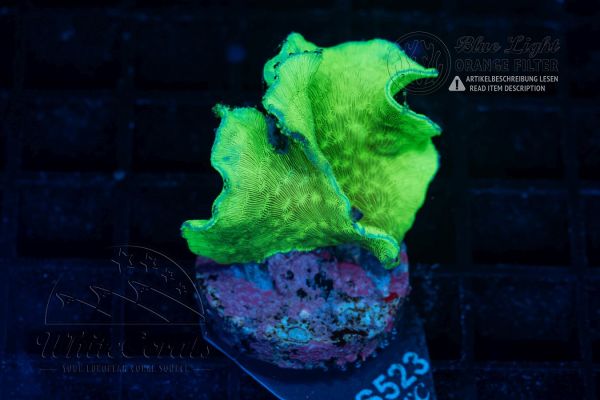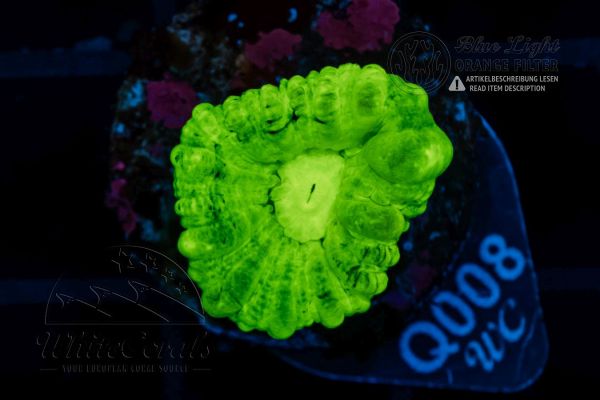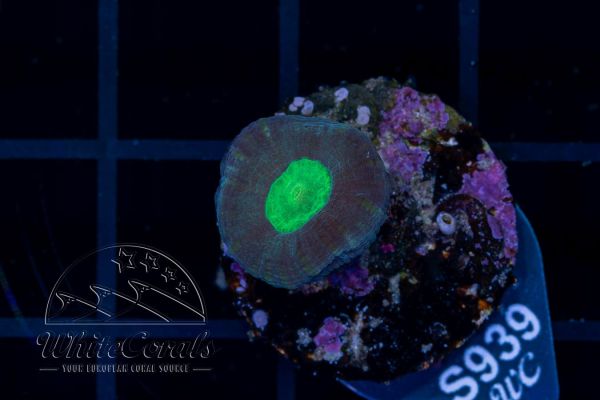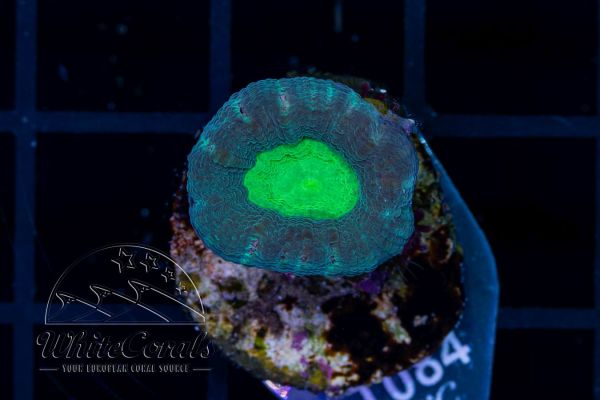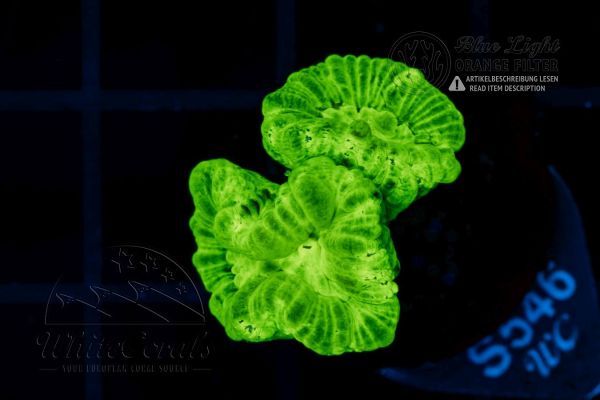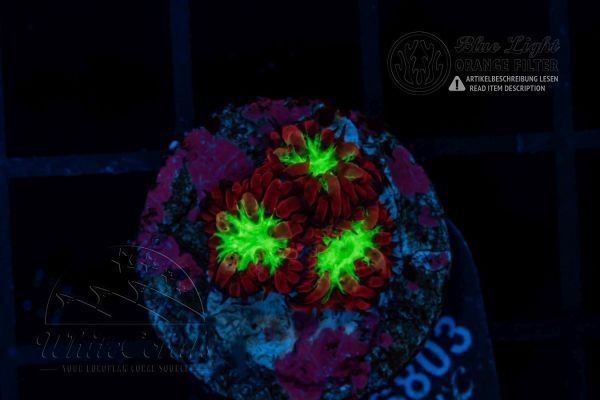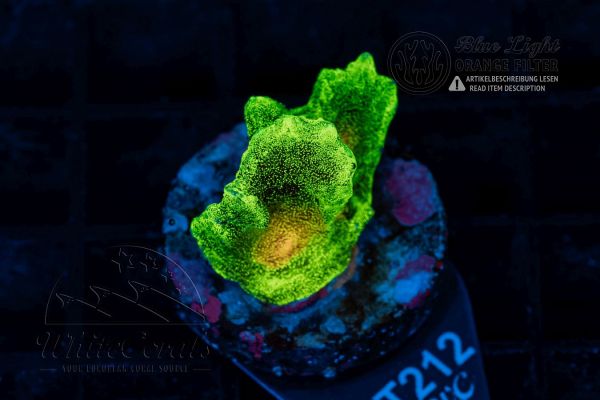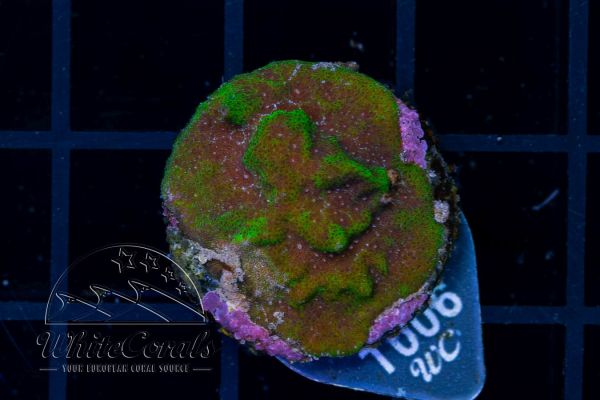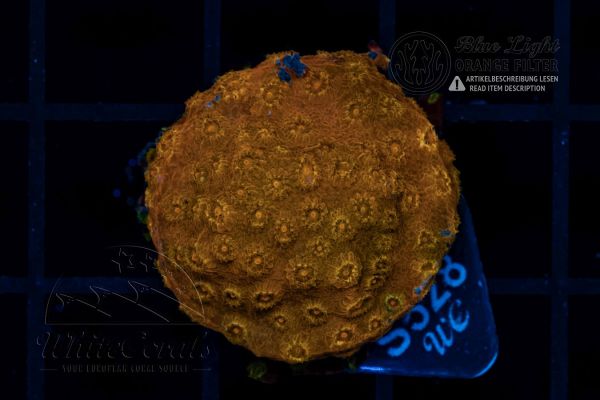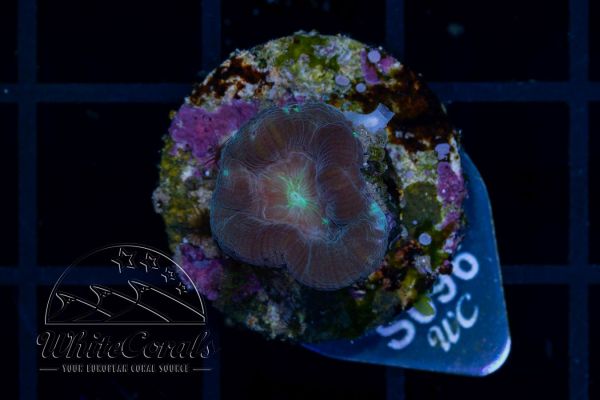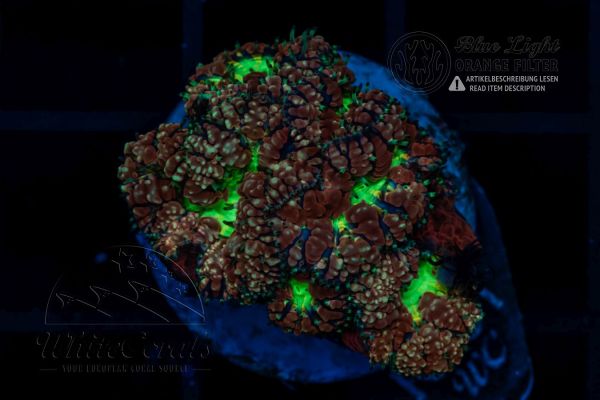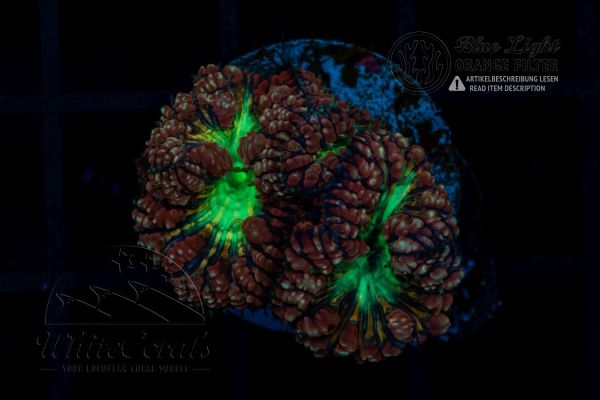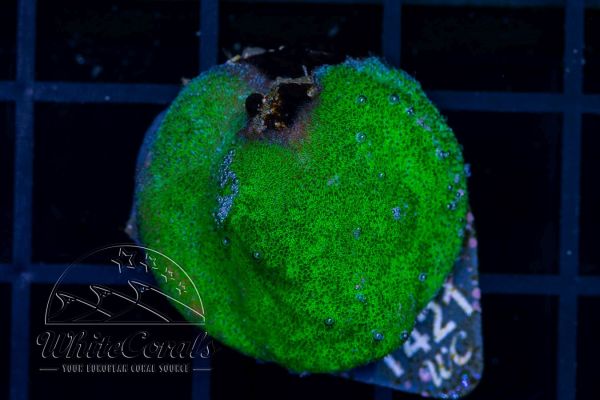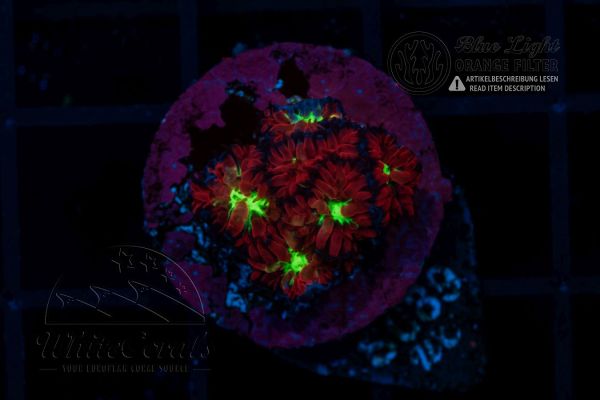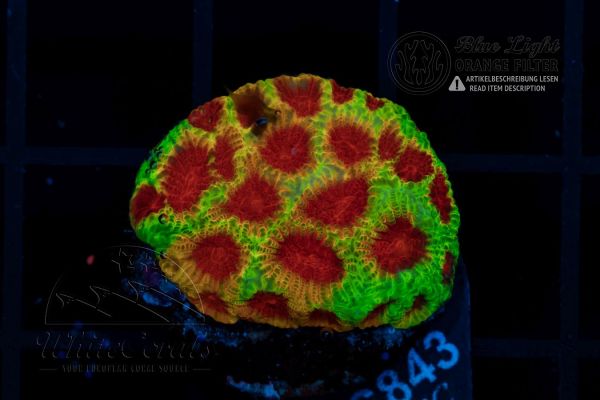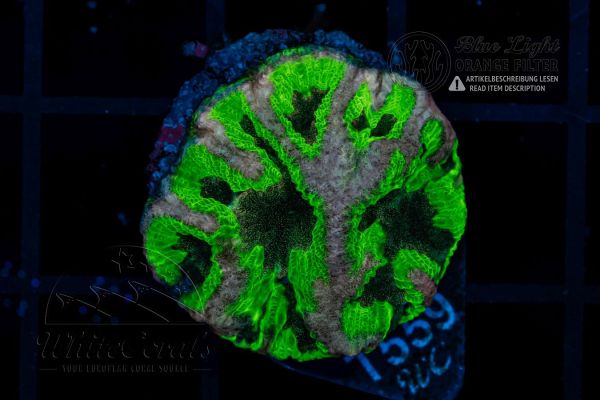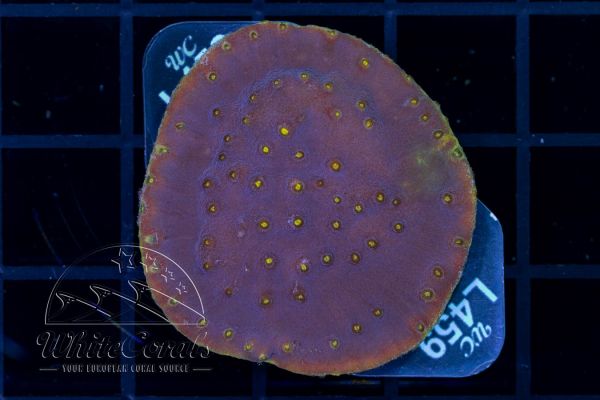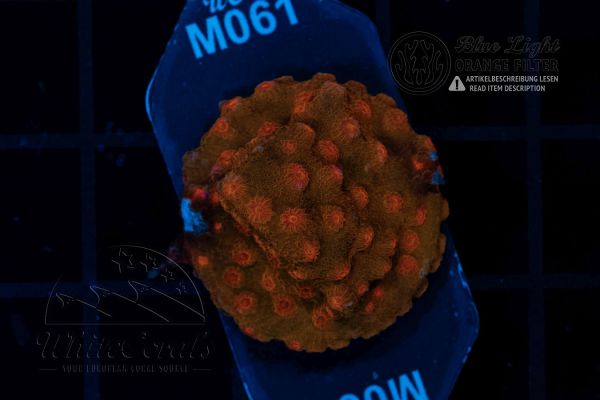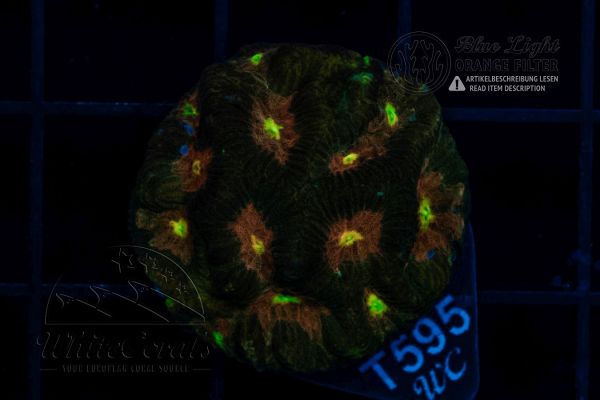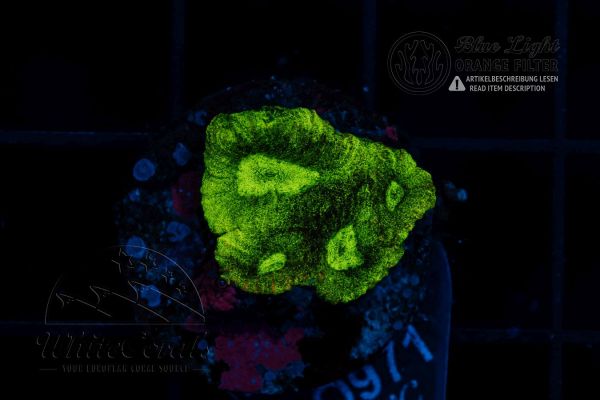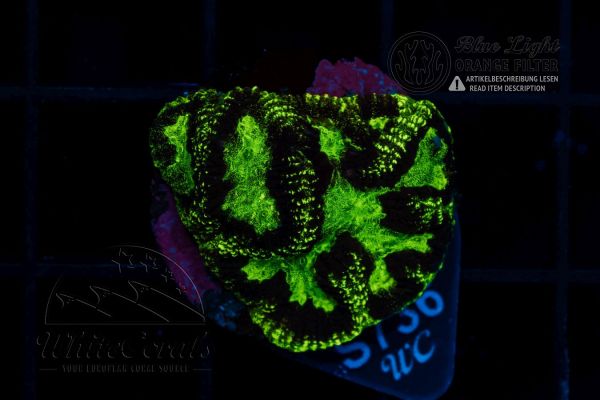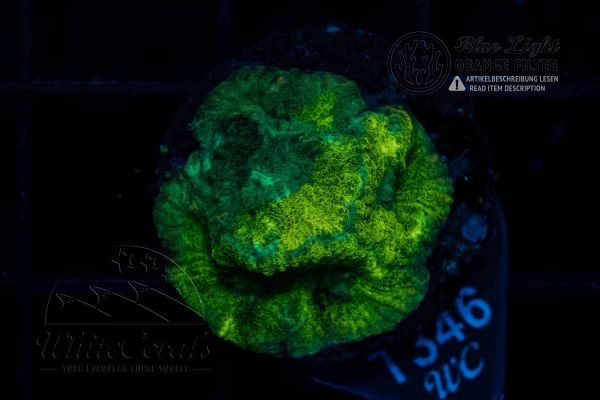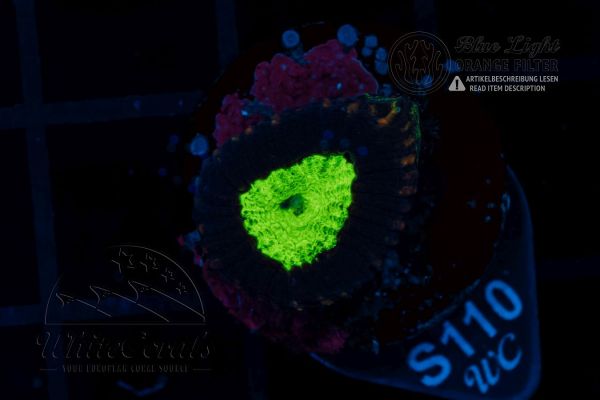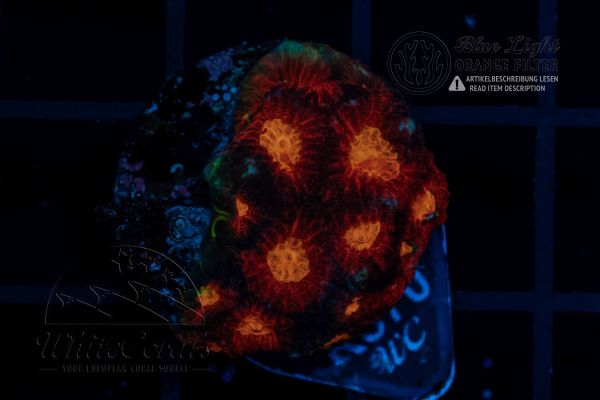Corals
Our Whitecorals marine aquarium shop thus limits the naming of corals which are also recognized as LPS by most of the sources.
LPS are definitely robust but not as robust as soft corals. They tend to have very beautiful colours even with a slightly increased nutritional values, they grow slowly and require very little to moderate light. LPS species are mostly low-maintenance than SPS. Normally one should not add more nutrition since LPS prefers less nutritional values.
Caulastrea Kryptonite (Filter)
EUR 16,90*
to articleCaulastrea Kryptonite (Filter)
EUR 24,90*
to articleBlastomussa wellsi Red and Green (Filter)
EUR 29,90*
to articlePectinia Space Invader (WCC)(Filter)
EUR 149,90*
to articleBlastomussa wellsi Purple and Green (Filter)
EUR 34,90*
to articleBlastomussa wellsi Purple and Green (Filter)
EUR 29,90*
to articleBlastomussa wellsi Red and Green (Filter)
EUR 29,90*
to articleTurbinaria reniformis Purple/Yellow
EUR 16,90*
to articleMaintenance and feeding the LPS corals
LPS love higher nutrients!
Hard corals develop properly if one (like in case of all the other coral species) ensures that the nutrients and amino acids are available in reasonable amount in the aquarium, the pH – value is correct and one ensures that the temperature, salt content and carbonate hardness are suitable. Suitable technology also plays a very important role in the coral development -and growth. Most of the LPS have similar requirements with regards to nutrients. One can locate the differences in requirements with regards to water flow and light in LPS corals. LPS have zooxanthellae, does not need to be fed actively, however LPS takes in small particles with its tentacles (Plankton, Mysis, Artemia etc.) LPS does not like any direct water flow.
Which LPS corals to buy for the beginners?
Most of the LPS corals which do not have any delicate tissues but are robust, are suitable as beginner corals. Here you can find a small collection of LPS - beginner corals which can be used after the startup phase:
- Caulastraea furcata: These finger corals (or flute corals) are separated very diligently under ideal water values and is very well suited for a nano tank. They love strong lighting and low water flow. Polyps colour is often brown and bright green in the center.
- Galaxea: There should be sufficient gaps between the corals since the crystal corals entangle its neighbouring corals with its very long fighting tentacles and can form large colonies. Prefers medium to high light intensity and low water flow. Suitable for coral breeding.
- Favia: Brain coral, usually green to brown. Very easy to maintain and can also be fed shrimps. Develops very long fighting tentacle which are used at night.
- Favites: Very much resembles the class Favia (see above).
- Platygyra: Similar to Favia and Favites. The description of brain coral comes through meandroide polyps whose windings/twists reminds of the brain structure.
- Duncanopsammia axifuga: Has green, brown and grey colours. The Bart coral has very fleshy polyps which should be fed actively due to its huge size. Light water flow and direct lighting is recommended.
- Trachyphyllia geoffroyi: colourful, fleshy brain coral which one can find in red, brown, green, has a large polyp with several mouth openings. Is often changed with Lobophyllia and Scolymia.
- Lobophyllia: These brain corals are found in orange, red or green,often in a „dot painting“. In comparison to other LPS corals, these corals nettle less strongly and absorbs nutrition floating around actively at night. Depending on the lighting type, one should place the corals accordingly in the aquarium. In HQI – in direct light on the bottom; In neon tubes – more on the surface , medium in the tanks.
- Fungia: Also called mushroom-or tabulate corals, in red, green, pink colour. Depending on the type, the polyps reach a diameter of 2 to 30 cm. Fungia would like the bottom ground, bright light and low water flow. These corals need sufficient space so that there are no entanglements by the neighbouring corals.
- An other very good beginner – LPS is Acanthastrea. You will find this coral species as a separate category at Whitecorals.
LPS coral sale in our online shop
Whitecorals always provides a colourful collection of LPS corals for purchase on its online shop. In addition to the above mentioned starter corals, we sell additional magnificent corals suitable for progressive coral experts.
You will find such beautiful species with us at regular intervals for e.g.:
- Alveopora and Goniopora – wonderfully shaped, green/grey/brown/white/multi-coloured Marguerite corals with round tentacles
- Blastomussa wellsi – colourfully very diversified large polyped hard coral (Colours: pink, red, orange, green, brown), Polyps resemblea disc anemone
- Chalice (Echinophyllia/Mycedium/Echinopora/Leptoseris – large group of plate-like corals)
- Cynarina lacrymalis – very resistant-capable teardrop coral, often brownish and transparent which feels comfortable in low to medium light and low water flow. Also suitable for the beginners
- Goniastrea – brain corals, similar as Favia and Favites
- Hydnophora – often coloured in fluorescent green or yellowish -brown. For advanced learner since the corals need a long period of acclimatization;
- Pavona – durable, quickly growing corals. Colors: green to brown. Has a leaf-like appearance
- Physogyra lichtensteini – often brownish, greyish white, greenish, also blue bubble coral which gladly accepts additional nutrition and is not difficult to maintain;
- Plerogyra – colourfully very diversified bubble coral, easy to maintain, however needs sufficient space due to fighting tentacles;
- Symphyllia – brain corals appear to be very similar, is often changed with Lobophyllia. Very wide colour mixture of brown over red to lilac and green. Needs much more attention than other brain corals
- Turbinaria – greenish brown to grey tube corals, recommended for advanced learners. Grows very rapidly and prefers a really strong water flow. Additional feed stimulates the corals for multiplied growth;
- Herpolitha – short tentacle plate coral which resembles a sole. Good for beginners. Exists in brown, green and grey colours.
LPS corals fragmentation
LPS corals often multiply due to division of its polyps. Artificial increase can take place by using a bone scissors in phaceloiden corals like Caulastrea furcata where one cuts off individual fragment of the coral or by sawing the ball-shaped colonies like Favia. In brain corals like Lobophyllia, one can easily break the polyps. So the frags grow, fixes on a piece of live rock. The corals should be fixed to a well lighted substrate. Corals can be fixed to the substrate with coral glue.
Order LPS corals all over Europe
You can buy LPS corals directly from us at Whitecorals online shop. On the left side you will find diverse categories with a varied offer in all price ranges, cheap corals to rare corals as well as hard coral frags for your nano tanks or for a marine aquarium. We ship to both private customers and dealers all over Europe overnight. The safely packed corals normally gets delivered directly at your doorstep as quick shipping within 24 hours. You need the corals just to get accustomed to your tank.
